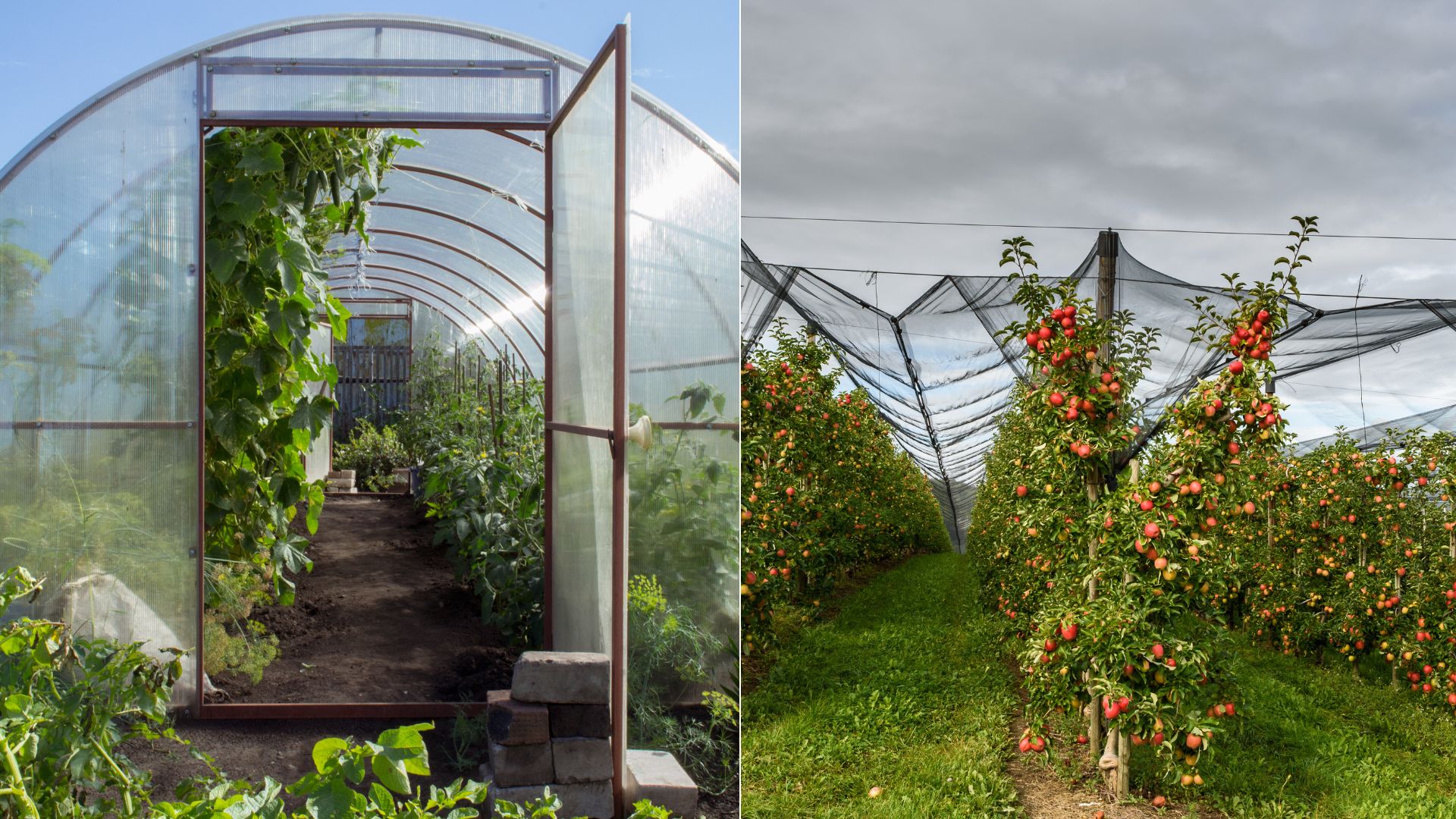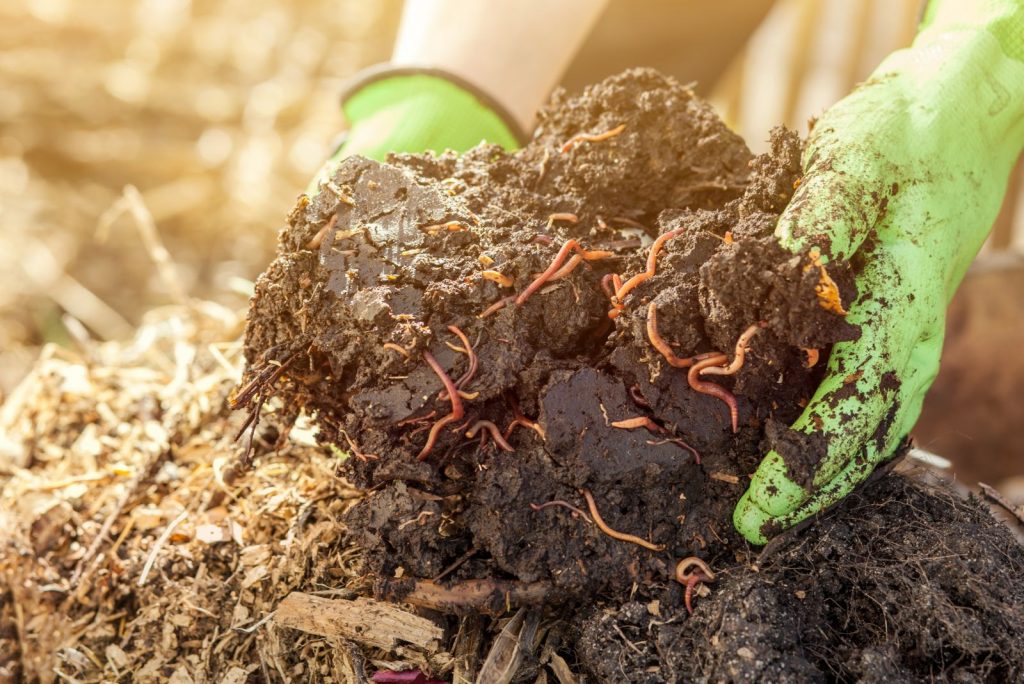Thunderstorms, windstorms, floods, dust stormes, drought, and heat can all create havoc in the garden. When a big storm is on the way, it’s important to keep your plants safe.
Some plants are rather delicate and require protection from crazy weather, while others are naturally strom-hardy and can tolerate various conditions. So, learn your plants’ tolerance and focus on those that need the most protection.
In this article, we are going to cover the best tips to protect your plants from storms. Let’s get started!
Protection Against Thunderstorms, Floods, & Water Woes
Thunderstorms are probably the most common heavy storms in the world. With their stunning lightning displays and intense rain, they can hardly go unnoticed.
Unfortunately, heavy rain causes flooding, which can cause significant damage in the garden such as root rot and poor drainage. To avoid flooding issues, grow your plants in well-draining garden beds.
Adding organic materials, such as compost, mulch, or well-rotted manure, will also strengthen the soil’s structure and allow it to drain excess water more effectively.
However, you should also make adjustments to gutters and downspouts to redirect water away from your garden. If you live in a flood-prone area, growing plants in raised garden beds may be a better option because they lift the plants over any standing water.
Delicate plants and seedlings are protected by covering them with row covers made of fabric and securing them with stakes or landscaping pegs. This will prevent the rain from eroding the soil where seedlings may be sprouting, and also from destroying your sensitive plants.
Protection Against Snowstorms
Snowstorms might create beautiful scenery, but dealing with the snow and ice later on can be a lot of work. It is important to protect your garden, especially if you are overwintering some plants.
Smaller gardens are typically protected against these storms by putting up upturned buckets as shields. Consider adding hail netting, industrial mesh, or a wire structure made to deflect hail if your surface area is larger (plus, they keep pests and predators away).
You can decide if you want this netting to be a permanent installation or something that will be stored nearby in case of an unexpected storm.
To prevent direct snowfall, you can try putting up burlap screens around more delicate plants. Fencing is a great option if you live in a snowy area – this will help lessen or redirect snow drifts.
Another great snow-resistance tactic is layered planting. What you should do is allow the hardier plants to take the brunt of the snow, protecting their more delicate relatives.
Greenhouses and cold frames are also great because they can regulate the temperature and serve as strong barriers. Make sure to have a sturdy tarp or temporary plywood covering nearby that can serve you as a quick protective shield in case of a sudden snowstorm.
For more information, you can check out this video:
Protection Against Dust Storms
Gardeners who live in areas with frequent dust storms face difficult challenges because these storms can completely rip out plants, strip their protective layers, bury little plants, and cover garden beds with debris.
Dust storms are characterized by strong winds that carry large quantities of fine particles, so you can imagine what a garden would look like after one heavy dust storm!
While you can’t control the weather and prevent dust storms, you can put up barriers to protect your plants. Building a sturdy fence or wall around the perimeter of your garden is the first step for protecting against incoming dust.
What can also be helpful are thick hedges or shrubs that can act as additional natural barriers, trapping and reducing the amount of dust that enters your yard.
Plants that are easily ripped out of the ground can be secured by adding thick mulch or gravel around them. Regular watering is also helpful because it binds the soil and makes it less prone to wind lift.
The plants will be completely covered with dust after the storm, so make sure to gently rinse them to let your plants breathe!
Protection Against Drought & Heat
Growing heat-tolerant plants is the best way to have a thriving garden during the hot summer months. However, I bet that you still want to grow specific plants that are not so adaptable to heat waves.
Prolonged exposure to hot temperatures can cause plants to dry and wilt, so you have to do everything in your power to protect them!
I would recommend you get shade netting that you can arrange around your plants however you want. This way, your plants will be shielded from the scorching sun during the day.
But if you don’t want to spend any money, you can simply place your plants in shady areas of your garden.
In order to keep soil moist and protected from the hot sun, add a thick layer of mulch (about 4 to 6 inches deep). Water your plants in the morning or afternoon to reduce water evaporation. Water them even more during dry spells.
One special method to save your plants from a heatwave is to gradually turn them off of daily watering so that they can adapt to their new environment. You should also get a drip irrigation system, which delivers water straight to the plant roots and minimizes water waste.
Also read: Check Out These Plants That Will Survive The Summer Heat
Protection Against Windstorms
Windstorms can do significant damage to your garden (some strong ones might even destroy it completely). The damage can range from sensitive plants losing their leaves to taller trees uprooting or shattering and destroying everything in their way!
Once the damage is done, there’s nothing else you can do but start your garden from scratch. However, if you live in a region where windstorms are pretty common, then protecting your plants against these storms is the best solution.
In order to prevent taller plants from breaking and uprooting, you should stake them and ensure that they are properly anchored. Also secure trellises, greenhouses, or any other garden structures that can be easily blown away.
If you have smaller plants, you can simply cover them with buckets and put something heavy on top of them, such as a brick.
In case you have lots of area that you want to protect, consider putting up a living windbreak – shrubs or hedges can be strategically placed to protect specific areas from strong winds. These also help with soil erosion and attract wildlife, so it’s a win-win!
Here’s another useful video for strong wind protection:


